PROTECT YOUR DNA WITH QUANTUM TECHNOLOGY
Orgo-Life the new way to the future Advertising by AdpathwayIf you’re worried about those tomatoes cracking and splitting before they are ready to pick, don’t sweat it! Gardening expert Melissa Strauss has some tips to help you keep the cracks away and harvest plump, juicy tomatoes.

Written by Melissa Strauss Horticulture review by Sarah Jay Last updated: June 28, 2025 | 4 min read
Tomatoes are one of the most common vegetables for home gardeners to grow. They are sturdy plants that produce a good deal of fruit in exchange for relatively little effort. The one thing you don’t want to see when harvesting your tomatoes is big, ugly splits and cracks.
While they are generally easy to grow, there are a few issues that are fairly common to encounter. Splitting and cracking is always disappointing to see after all the hard work you put into your tomatoes, but fortunately, you can prevent these fruiting issues with a few simple tips.
Over the years, I’ve had to toss many tomatoes over the fence to my chickens. They don’t mind the cracks. However, we aren’t trying to grow them to feed to chickens or put in the compost bin. We’re growing them to make tasty sandwiches, pies, sauces, and salads!
Here’s how to prevent tomatoes from cracking!

What Makes Them Crack?
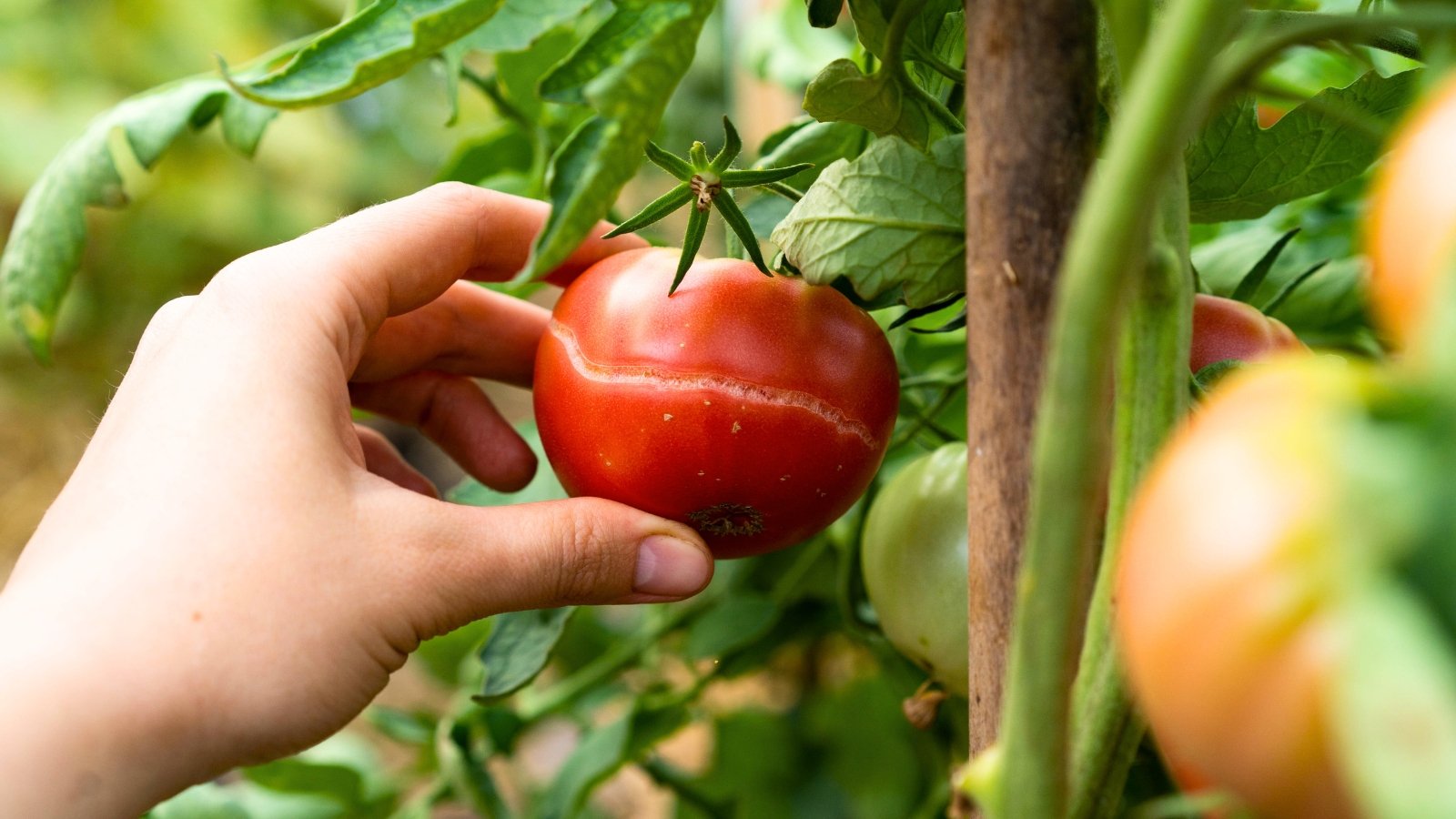 Sudden downpours after dry days can split ripe fruit fast.
Sudden downpours after dry days can split ripe fruit fast.Cracking tomatoes is a result of irregular watering. It happens due to sudden changes in water availability. The inside swells with moisture, and the skin can’t catch up, so it cracks and then splits open. If the fruit is overripe, thin-skinned, or has had an inconsistent watering schedule, it’s even more likely to happen.
Fruits that stay on the vine for too long are more likely to split. Their skin becomes thinner and more fragile. Some varieties are notable for having thin, delicate skin. These are excellent for eating fresh, but they also tend to crack easily.
There are a handful of other factors that contribute to the issue, and most of them are preventable. Let’s talk about how you can adjust your watering routine to prevent this from happening to your tomatoes.
Water Deeply and Regularly
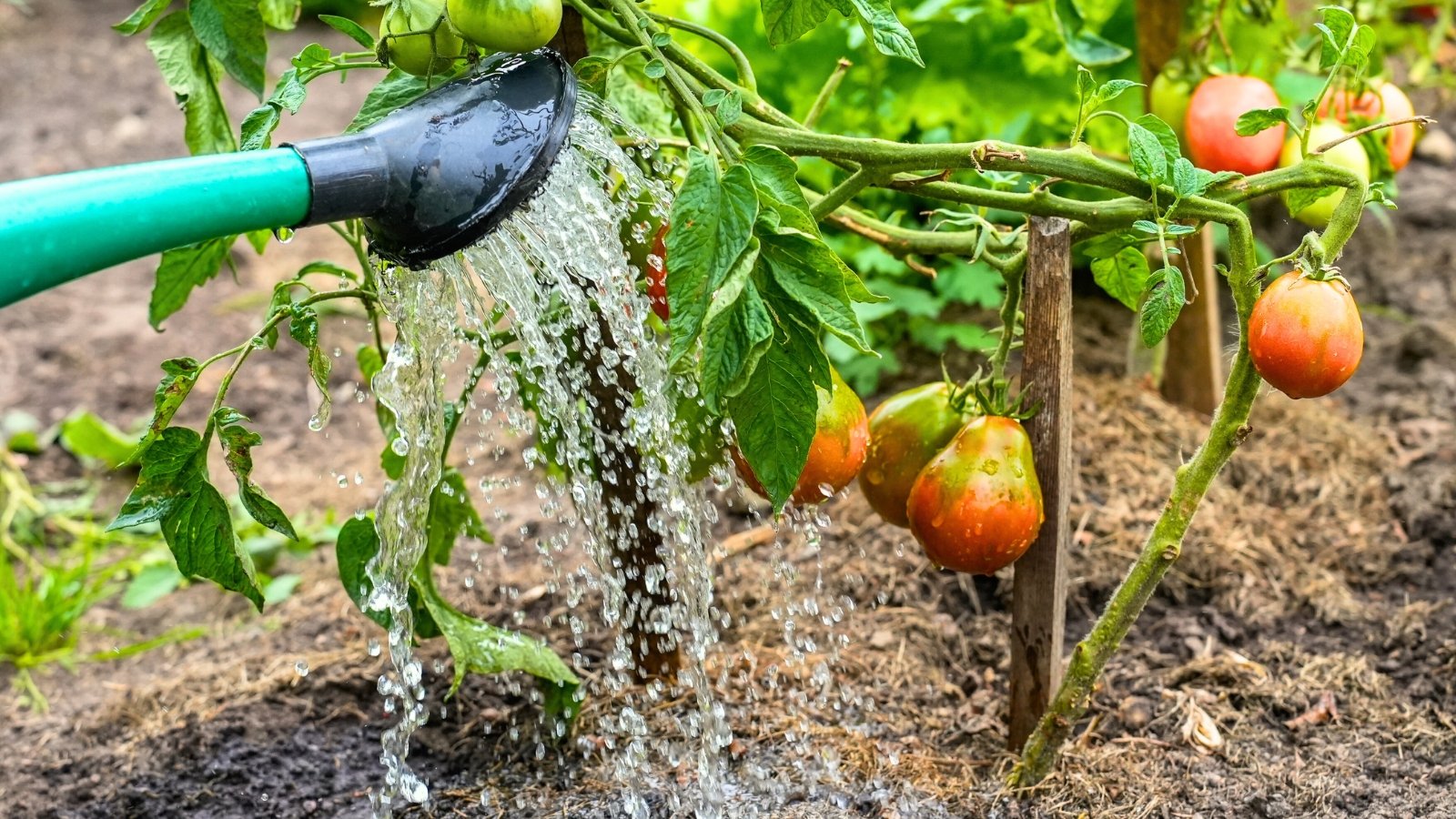 Deep watering twice weekly helps prevent sudden skin stress.
Deep watering twice weekly helps prevent sudden skin stress.Prevent your tomatoes from cracking by starting with a healthy watering schedule. You can’t control the weather, and sometimes a period of heavy rain can follow a period of drought. If you’re not watering consistently, this leads to dehydrated tomatoes that suddenly swell and split.
The way to combat this is to give your tomatoes water on a consistent basis. The soil shouldn’t be allowed to dry completely. When you irrigate, do so deeply, allowing the water to seep down as far as the roots. Do this at least twice a week when experiencing dry weather.
If you water them enough in dry weather, they will already be full of moisture. The sudden change in precipitation won’t shock them, and you’ll avoid those dreadful fissures.
Use Mulch
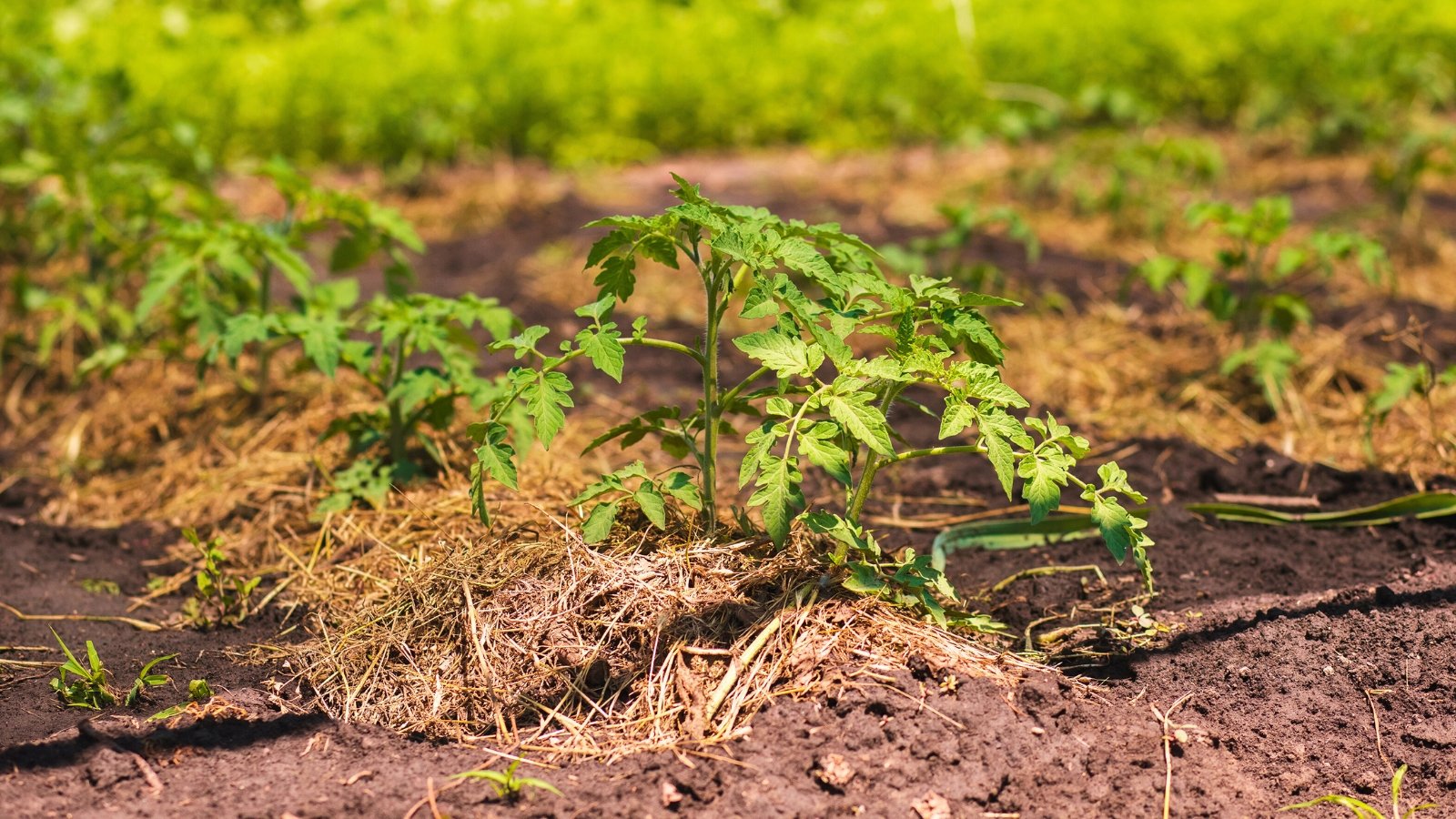 Mulch keeps moisture even and roots a little less frantic.
Mulch keeps moisture even and roots a little less frantic.Since fluctuating moisture levels are the cause of this issue, it makes sense to work on balancing them out. Mulch is a great way to keep your soil evenly moist. It does this by slowing the evaporation of water in the soil. It also reduces the impact of sudden heavy rainfall.
Mulch doesn’t just keep your soil consistently moist; it also works to regulate the temperature. Keeping the soil a bit cooler reduces stress and prevents your plants from absorbing water too rapidly.
When the soil is consistently cool and moist, your plants grow strong, healthy roots. Those healthy roots are better equipped to regulate water uptake and support consistent fruit development. Good mulch options include wood chips, straw, pine needles, and leaves.
No Overhead Watering
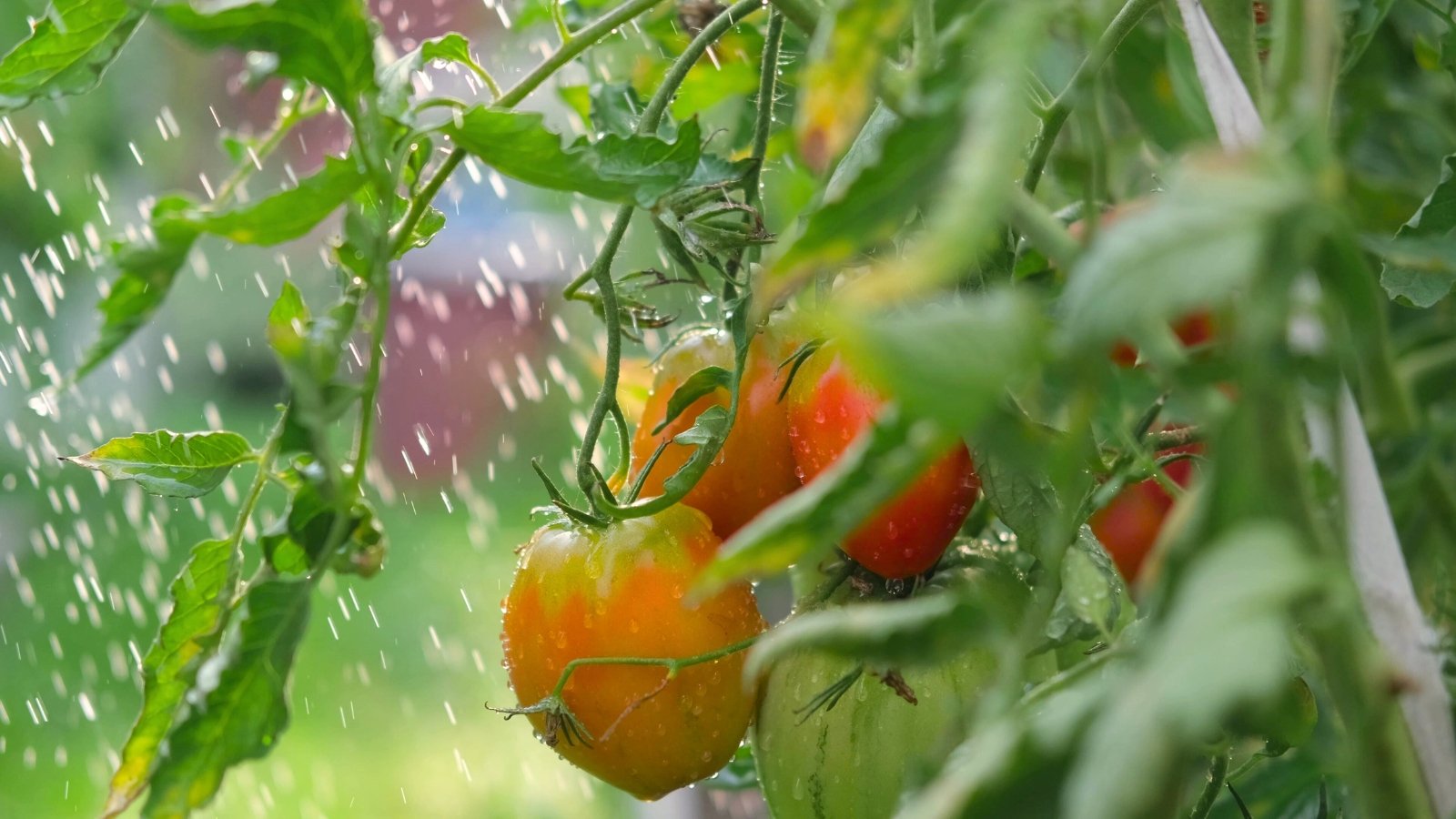 Avoid spraying leaves to keep fungal issues at bay.
Avoid spraying leaves to keep fungal issues at bay.You may be doing a good job of watering regularly. However, if you are watering overhead, your tomatoes may not be receiving as much of it as you think. Overhead watering can cause a whole host of issues, not the least of which are fungal diseases.
Essentially, overhead watering deposits a lot of water on the leaves. This water can sit there and provide a place for fungus to grow. It also evaporates quickly, so it’s more wasteful. Less water reaches the root zone, which is where it’s most needed.
The best way to hydrate your tomatoes is at the soil level. You can set up drip irrigation or use soaker hoses to make it easier on yourself. You can also use a watering wand as long as you hold it down near the soil rather than sprinkling over the foliage. Make sure to run your irrigation long enough to soak the roots.

Avoid Dry Soil
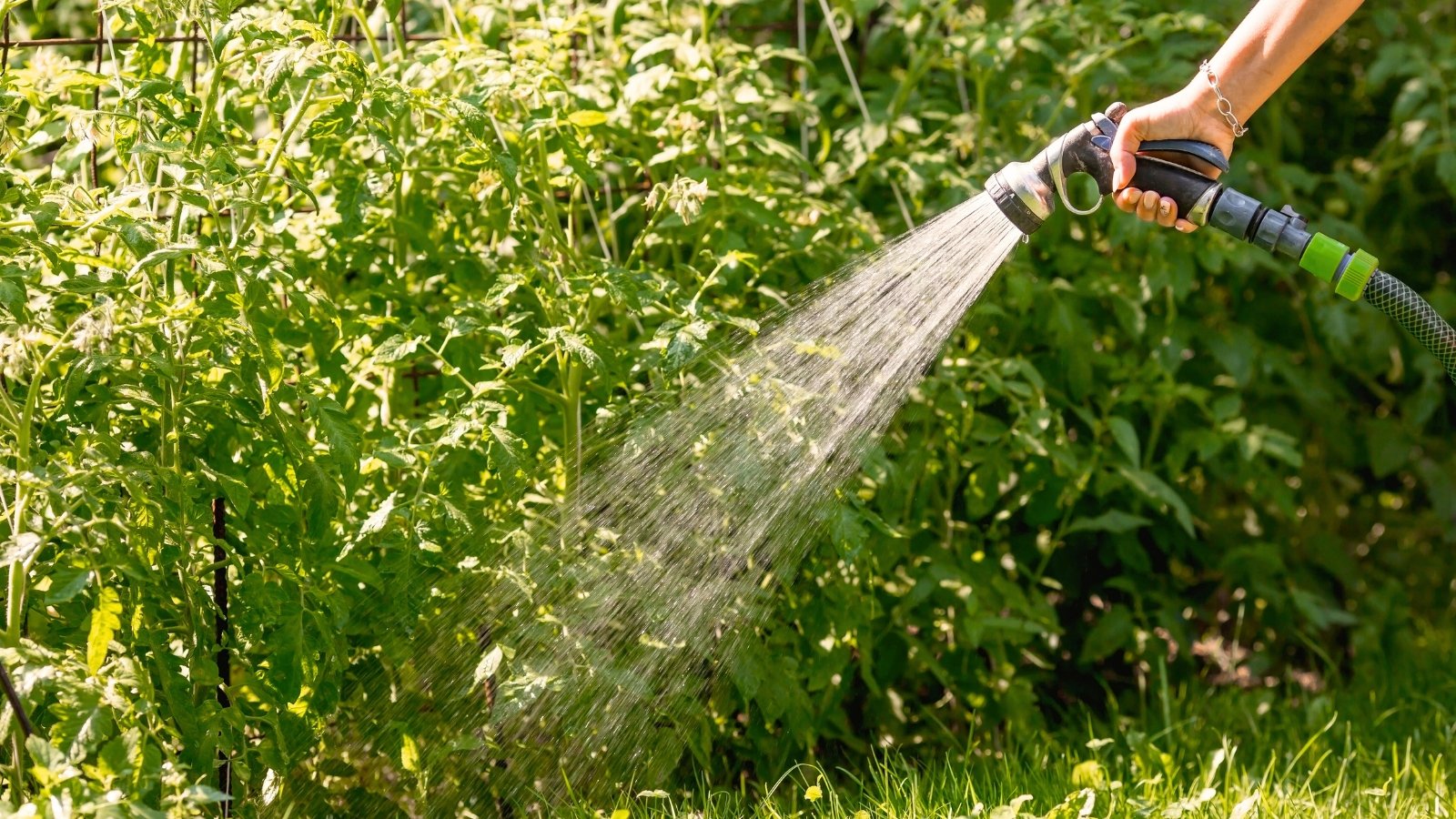 Roots prefer a slow drink, not a sudden flood.
Roots prefer a slow drink, not a sudden flood.This bears repeating, and giving some time of its own, because it’s integral to growing sweet, plump tomatoes with no cracks. When the soil is very dry, the plant will experience stress. In an effort to conserve moisture, or because there is none to absorb in the first place, your plant will slow its uptake of water.
If a sudden heavy rain occurs after a period of drought, the dry roots will rapidly absorb as much as they can. It’s their defense against more drought conditions. They take in as much as they can to store it for scarcity.
If you’ve been neglecting your plants and their roots are dry, don’t give them a ton of water all at once to make up for it. This will have the same effect as a heavy rain. Instead, work up to it gradually. Allow the soil to gradually rehydrate over a few days.
Water in the Morning
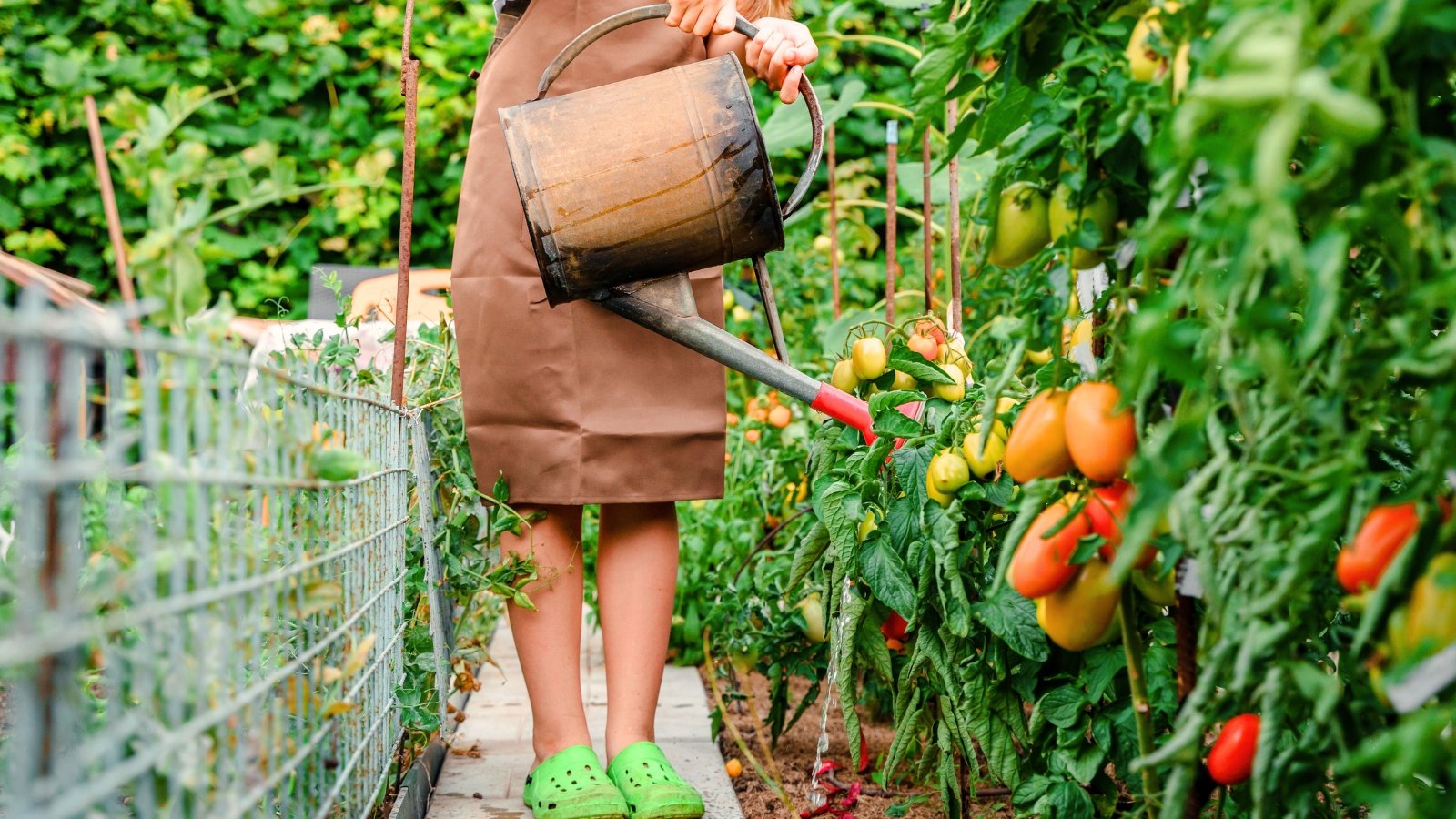 Hydrated roots handle heat better when watered before noon.
Hydrated roots handle heat better when watered before noon.The time of day that you water is the final piece of the puzzle to prevent tomatoes from cracking. Watering in the morning is beneficial for several reasons. For one thing, it maximizes the water you give them. The cooler morning temperatures mean less evaporation. That means more of the moisture reaches the roots and less of it evaporates into the air.
By delivering moisture in the morning, before the stress of heat sets in, you prepare your plants better for that stress. They start the day hydrated, which prevents wilting, sunscald, and blossom drop. It also reduces the risk of fungal diseases. The water evaporates during the day, and then goes into the cooler night with dry foliage.
When it comes to splitting and cracking fruit, watering in the morning ensures that your plants start the day fully hydrated. This way, if it rains, the roots are already hydrated. They won’t suck up too much moisture if it suddenly becomes available to them.


 2 weeks ago
9
2 weeks ago
9





















 English (US) ·
English (US) ·  French (CA) ·
French (CA) ·